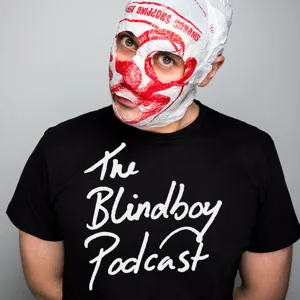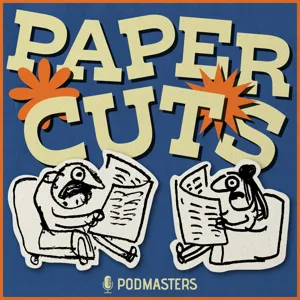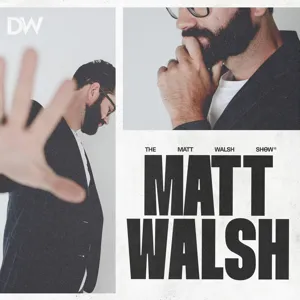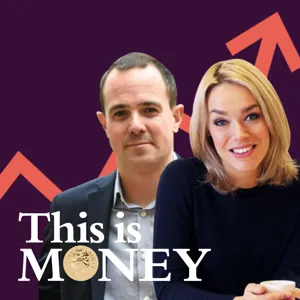Podcast Summary
High costs and lengthy delays in US infrastructure: The US is the 6th most expensive place to build rapid rail transit, wasting resources and discouraging ambitious projects
The United States, particularly states like California, face significant challenges in building infrastructure due to high costs and lengthy delays. This issue is not unique to Democratic-led areas, but it poses a significant hurdle for the Democratic Party's pitch to use government to solve big problems. According to policy reporter Jerusalem Dempsis, the US is the sixth most expensive place to build rapid rail transit, costing 50% more per mile compared to other countries. This inefficiency not only results in wasted resources but also discourages ambitious projects. The causes of these challenges are complex and require further exploration, but addressing them is crucial for the success of infrastructure initiatives and the democratic governance project as a whole.
Cultural deference to engaged voters and environmental protection laws cause delays and increased costs in US infrastructure projects: Despite fewer tunneled projects, US infrastructure costs are higher due to cultural factors and building practices, resulting in significantly higher costs per mile for transit projects compared to European cities
The United States has a higher infrastructure cost compared to other countries, despite having less tunneled projects. This is due in part to cultural deference to upper middle class engaged voters, which can lead to significant delays and increased costs through the use of environmental protection legislation. Additionally, the lack of ambition to build in dense areas and the higher cost of tunneled infrastructure contribute to the artificially lower appearance of infrastructure costs in the U.S. For instance, the cost per mile for transit projects in New York, San Francisco, and Los Angeles is significantly higher than in European cities like Copenhagen, Paris, and Madrid. Contrary to popular belief, European cities are not inherently more efficient, but their approach to infrastructure projects, such as building in dense areas and utilizing tunnels, results in lower costs.
U.S. public infrastructure development hindered by lack of agency autonomy and excessive citizen involvement: The U.S. struggles with public infrastructure development due to lengthy decision-making processes caused by regulations and cultural aversion to strong government roles.
The United States' inability to effectively build and maintain public infrastructure, specifically public transit, can be attributed to a lack of empowerment and autonomy given to public agencies and the excessive involvement of citizens in decision-making processes. This jurisdictional issue and fear of making decisions have led to significant delays and increased costs. The change in infrastructure development over time can be explained by the implementation of regulations, such as the National Environmental Protection Act, aimed at preventing government overreach and protecting communities. However, these regulations have also resulted in lengthy and complex decision-making processes that hinder progress. The United States' aversion to a strong government role, rooted in cultural and historical factors, has further complicated infrastructure development. Understanding these underlying causes is crucial for finding solutions to the modern infrastructure tangle.
Not in My Backyard: The Divided Democratic Soul of Local Politics: Historical government overreach and environmental damage have led to 'Not in My Backyard' syndrome in local politics, where privileged individuals block beneficial projects for their community, exacerbated by structural issues of who engages in local politics.
While increasing participatory democracy at the local level with the intention of making government more representative and responsive to community needs, it often ends up being used by privileged individuals to block projects that could benefit the broader community, such as public transit. This phenomenon, known as "not in my backyard," can be traced back to historical periods of government overreach and environmental damage, leading to a divided democratic soul. Progressives have recognized the issue of regulatory capture by big businesses and billionaires, but have yet to fully acknowledge that some progressive communities and individuals have also engaged in regulatory capture, often to preserve stability and homeownership. The structural issues of who engages in local politics, with older, whiter, and wealthier individuals being overrepresented, further exacerbates this problem. The solution may require more inclusive and accessible forms of participatory democracy, as well as addressing the root causes of community division and inequality.
Disparity in Governance Participation: The gap between engaged and unengaged citizens in governance decisions persists, with organized interests often swaying policy-making, particularly in projects with diffuse benefits and concentrated harms.
There's a significant disparity between those who are most engaged in the project of governance and those who are not. Before the COVID-19 pandemic, there was a gap in demographics and homeownership between those participating in local government decisions and the general population. With virtual meetings, the cost to participate decreased but still didn't solve the issue of underrepresentation. The author emphasizes the importance of representative government to address these issues and warns against the influence of organized interests, often representing the wealthy, in policy-making. An example of this issue can be seen in the Maryland Purple Line project. This transit line, aimed at connecting Montgomery and Prince George's counties, has faced significant opposition due to the concentrated harms of construction, such as noise, traffic, and disruption. However, the benefits of the project are diffuse, and those who would benefit in the future cannot effectively organize in its favor. The long-standing delay and high cost of the project highlight the structural disadvantage faced by progress, as the voices of those most affected by the harms continue to dominate the conversation.
Wealthy homeowners delay Purple Line project using environmental laws: In blue areas, environmental laws can be misused to halt infrastructure projects, causing inconvenience and cost for commuters, despite not being the primary motivation.
In the ongoing debate over the Purple Line light rail project in Chevy Chase, Maryland, wealthy homeowners have used various justifications, including environmental concerns and low ridership, to delay the project for over 20 years. Despite Chevy Chase being a Democratic and liberal community, the homeowners have leveraged environmental laws to halt the project, causing significant inconvenience and cost for domestic workers and other commuters. This situation highlights a larger issue where, in blue areas, the willingness to sacrifice for the greater good is often outweighed by the use of liberal laws to prevent infrastructure projects. The National Environmental Policy Act, intended for environmental protection, has been weaponized in this case, even when the concern for the environment is not the primary motivation. It's important to note that the Sierra Club, an environmental organization, has also opposed public works projects in the name of environmentalism. However, the informal use of these laws at the local level to prevent projects for reasons other than environmental concerns is a concerning trend.
The scarcity mindset and opposition to public works projects: The scarcity mindset, rooted in the lack of a social safety net, drives opposition to public works projects, but it's not the only factor. Racism and classism also play significant roles. Acknowledging the complexity of the issue and adopting a multifaceted approach is necessary for addressing both individual and collective interests.
The lack of a social safety net in the United States, particularly in areas like medical care, higher education, and retirement, has incentivized individuals to prioritize saving and accumulating wealth. This mindset, rooted in scarcity, can influence opposition to public works projects like housing and transit development. However, it's essential to recognize that this is not the only factor driving NIMBY (Not In My Backyard) behavior. Other factors, such as racism and classism, also play a significant role. The conversation around housing and public works projects requires acknowledging the complexity of the issue and the need for a multifaceted approach that addresses both individual and collective interests. While better social policy may not completely eliminate opposition to these projects, it can help mitigate the impact of the scarcity mindset and create a more equitable society.
Environmental Impact Statements: A Double-Edged Sword: The lengthy and complex environmental impact statement process, while intended to protect the environment, can also be used to delay and oppose environmentally friendly projects, leading to frustration and inaction.
The opposition to certain housing and environmental policies is not solely driven by wealthy individuals or those opposed to diversity, but also by homeowners from various backgrounds who are concerned about protecting the value of their assets. This concern is particularly evident in the lengthy and complex environmental impact statement process required by laws like the National Environmental Policy Act (NEPA). These statements, which can run up to 1000 pages with an average completion time of four and a half years, allow for endless community input and challenges, leading to delays and repeated complaints without any clear end in sight. This process, while intended to protect the environment, has also been used to oppose projects that are environmentally friendly, such as infill housing and solar farms, and even to protect parking lots and car infrastructure, which are harmful to the environment.
US environmental regulations contribute to high housing costs: European countries' non-litigation approach to environmental protection results in lower infrastructure and housing costs compared to the US, particularly California, due to fewer legal challenges
The complex regulatory processes and litigation-heavy environmental protection systems in the US, particularly in California with NEPA and CEQA, contribute significantly to the high costs of infrastructure and housing projects, making it less economically viable to build affordable units. European countries, which don't rely on litigation for environmental enforcement, have better records in this regard. Before the COVID-19 pandemic, housing affordability in the US was already a major issue, with high rent burdens and housing undersupply in job-rich areas. The problem isn't just about buying homes but also about rental affordability, which had been worsening. The pandemic exacerbated these issues and brought housing affordability to the forefront of the conversation, but it's essential to recognize that these problems were not caused solely by the pandemic. The housing crisis can be seen as two separate issues: one related to poverty and income, which could potentially be addressed by providing financial assistance to those in need, and another related to regulatory barriers that drive up costs.
The housing crisis is not just about affordability, but also a problem of supply: The severe lack of available housing units in desirable areas is causing a housing crisis, despite decent incomes for many people, due to regulations making it difficult to build new housing, particularly affordable units.
The housing crisis in the United States is not just a matter of affordability, but also a problem of supply. Even people with decent incomes cannot afford adequate housing in desirable areas due to a severe lack of available housing units. This issue is compounded by regulations that make it difficult to build new housing, particularly affordable units. As a result, there is a significant shortage of housing supply in metropolitan areas where jobs and opportunities are concentrated. This shortage is not just a problem of location or type, but a crisis of overall availability. The response cannot be to simply encourage people to move to areas with cheaper housing if they lack access to jobs, family, or community. Instead, we need to address the root causes of the housing shortage and find ways to increase the supply of affordable housing in desirable areas.
Historical elimination of affordable housing: Through filtering, older housing becomes more affordable, but societies must build enough housing for all income levels to prevent displacement and gentrification.
Throughout history, regulations and changing housing stock have led to the elimination of affordable, smaller housing units, pushing people into overcrowded situations or homelessness. Instead of addressing the root cause of suboptimal housing, societies have often outlawed these types of housing options, leading to a shortage of affordable housing. This, in turn, results in gentrification and displacement of low-income communities. The majority of affordable housing in the U.S. is created through the process of filtering, where older housing becomes more affordable over time. To prevent displacement, it's essential to build enough housing for all income levels, as young professionals will still move into desirable neighborhoods and bid up housing prices if no alternatives are available.
The housing crisis fuels homelessness: The housing crisis contributes to homelessness by making affordable housing scarce, leading to the conversion of affordable units into higher-priced housing and pushing out lower-income individuals.
The housing affordability crisis and the homelessness crisis are interconnected issues. The market's response to the lack of new home construction has led to the conversion of once affordable units into higher-priced housing, pushing out lower-income individuals and contributing to the growth of homeless populations. The focus on demand-side policies, such as giving people money to help them afford housing, is more appealing to politicians than tackling the complex issue of increasing the housing supply. However, addressing the root cause of the housing crisis requires a supply-side solution, which is difficult to implement due to the diffuse benefits and concentrated harms. The lack of political will to address the supply side of the housing crisis has resulted in a growing population of homeless individuals, many of whom suffer from health issues due to their living conditions.
Housing affordability crisis: A national problem with complex causes: The housing affordability crisis and resulting homelessness are complex issues with roots in urban concentration, housing supply shortages, and local policies. National solutions are needed to address the root causes and improve overall economic growth.
The housing affordability crisis and resulting homelessness are not just local issues, but rather national and regional problems with complex causes. The speaker argues that the concentration of people and firms in urban areas, particularly in blue states and cities, has led to housing supply shortages and rising costs. These issues are exacerbated by local policies and governance, but they also have significant national implications. Research shows that housing supply constraints can lower overall economic growth, affecting all Americans. To address these collective action problems, a multi-level approach involving state, local, and federal policies is necessary. While local policies can make things better or worse, the root causes and solutions are beyond the scope of individual cities or states.
The housing crisis in liberal areas is a complex issue requiring state and federal solutions: States and federal government need to collaborate to address the housing crisis in liberal areas through changes in zoning laws and funding for economic growth
The housing crisis in liberal areas, often labeled as "blue states and cities," is a complex issue that requires more than just local solutions. While some progress has been made in liberalizing zoning laws in certain places, the massive demand for housing in these areas exacerbates the problem. The focus on local hypocrisy within the pro-housing community is important, but it's equally important to recognize that collective action problems like this cannot be solved solely at the local level. The power to change local laws lies with states, and federal action is also necessary. The constitution grants power to both the federal government and the states, and cities and localities only have the powers that states choose to give them. Therefore, states should engage in requiring changes at the local level or making changes themselves. Efforts like California's process to require localities to meet their housing budgets and Connecticut's legalization of accessory dwelling units are examples of statewide action that can bring about change. The federal government could also take a more enhanced role by providing funding to states and localities that are blocking economic growth through restrictive zoning laws. Continuing to view the housing crisis as a local problem is part of why it remains unsolved, and a reframing of this issue as a state and federal problem is necessary for progress.
Political opposition hinders progress on housing affordability and homeless shelters in California: Despite efforts to raise funds and build shelters, political opposition from upper middle class homeowners through lawsuits and reorganization has resulted in less than 10% of promised shelters being built.
The issue of housing affordability and the construction of shelters for the homeless in California faces significant political challenges, making it a complex problem to solve. Despite the passing of measures to raise funds and build shelters, local opposition through lawsuits and reorganization has resulted in less than 10% of promised shelters being built. This political opposition, fueled by the power of upper middle class homeowners, is a significant barrier to progress. The situation is further complicated by the fact that politicians, including Governor Gavin Newsom, need to maintain the support of these communities to avoid political consequences like recalls. The problem is not only at the local level, as even state and federal efforts to address housing affordability and construction face significant challenges. However, there is a reckoning at the federal level, with agencies like the Council of Economic Advisors and the Department of Housing and Urban Development acknowledging the harm caused by zoning regulations. It will take political courage to address these issues, but there are encouraging signs of progress, such as Berkeley's decision to eliminate single family zoning.
Proposed incentive for states to reform zoning may not be enough: The Biden administration's $5B incentive for states to reform zoning laws is a step towards addressing economic and racial justice issues, but critics argue it may not be enough to significantly change the status quo. More comprehensive solutions, such as requiring states to increase housing supply or diversifying regional job markets, are needed.
While the Biden administration's proposed $5,000,000,000 incentive for states to reform zoning laws is a step towards addressing the economic and racial justice issues caused by zoning, it may not be enough to significantly change the status quo. Critics argue that the pot of money approach is small relative to the problem and may not effectively incentivize local governments to change their behavior. Some suggest exploring more ambitious solutions, such as requiring states to increase housing supply or focusing on diversifying regional job markets. Neighborhood defenders argue that cities should not be viewed solely as engines of economic growth, but rather as places for current residents, and that the federal government should respect their desire for their communities to remain as they are. Overall, while the proposed incentive is a start, more comprehensive solutions are needed to effectively address the complex issues surrounding zoning and housing affordability.
City policies can unintentionally exclude lower-income individuals: City policies prioritizing quiet communities may push out diversity and affordability, making it harder for lower-income individuals to access economic opportunities.
City policies that aim to preserve quiet communities for some, may inadvertently push out the very diversity and affordability that make cities attractive and vibrant. The housing crisis in cities has made it increasingly difficult for lower-income individuals to relocate and take advantage of economic opportunities, sacrificing their futures for the aesthetic preferences of others. The speaker emphasizes the importance of recognizing this issue and considering the potential consequences of individual choices on the larger community. Additionally, they suggest reading "Golden Gates" by Connor Doherty to learn more about the housing crisis and "The Dispossessed" by Ursula Le Guin and "Stories of Your Life" by Ted Chiang for a broader perspective on political debates and the importance of imagination.






